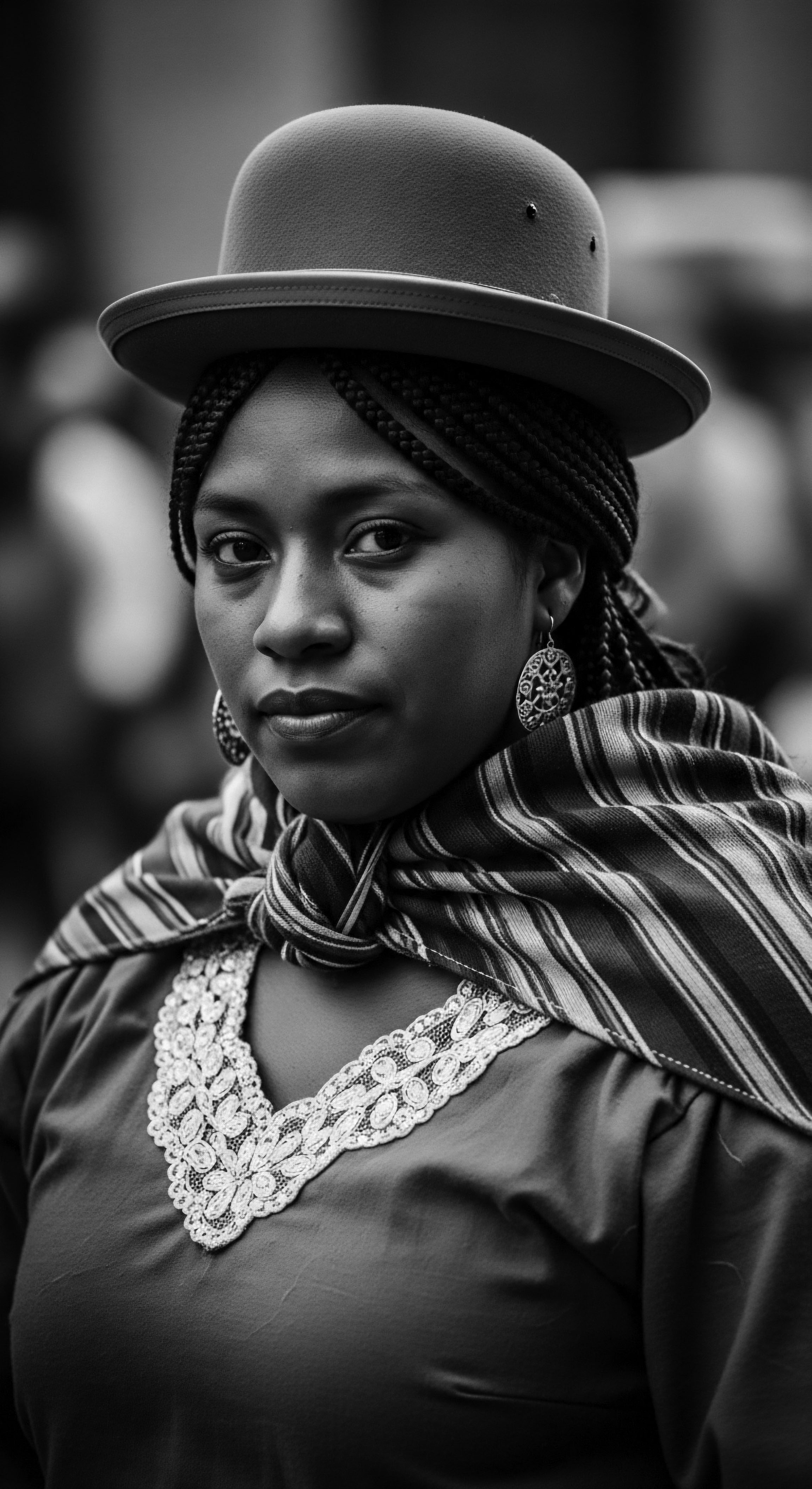
Fundamentals
The concept of Styling Techniques, within Roothea’s ‘living library,’ transcends mere aesthetic manipulation of hair. At its core, it refers to the systematic application of methods, tools, and preparations to alter, arrange, and maintain the physical presentation of hair. This understanding extends beyond superficial appearance, delving into the very substance and spirit of a strand.
For textured hair, this designation carries particular weight, representing a profound connection to ancestral practices and a continuous dialogue with the natural world. It is a clarification of how human ingenuity has, across millennia, sought to shape and protect the hair, often in concert with its inherent qualities.
Consider the elemental meaning of these techniques ❉ they are purposeful actions undertaken to achieve a desired hair form or state. This might involve changing its curl pattern, securing it in a particular shape, or enhancing its inherent beauty and health. The earliest expressions of these techniques were deeply intertwined with survival, social identification, and spiritual observance.
From the simplest act of gathering hair to keep it from the face to the most elaborate ceremonial coiffure, Styling Techniques have always served a dual purpose ❉ practical utility and profound cultural significance. The historical lineage of these practices, particularly within communities of African descent, reveals a complex interplay of environmental adaptation, communal bonding, and self-expression.
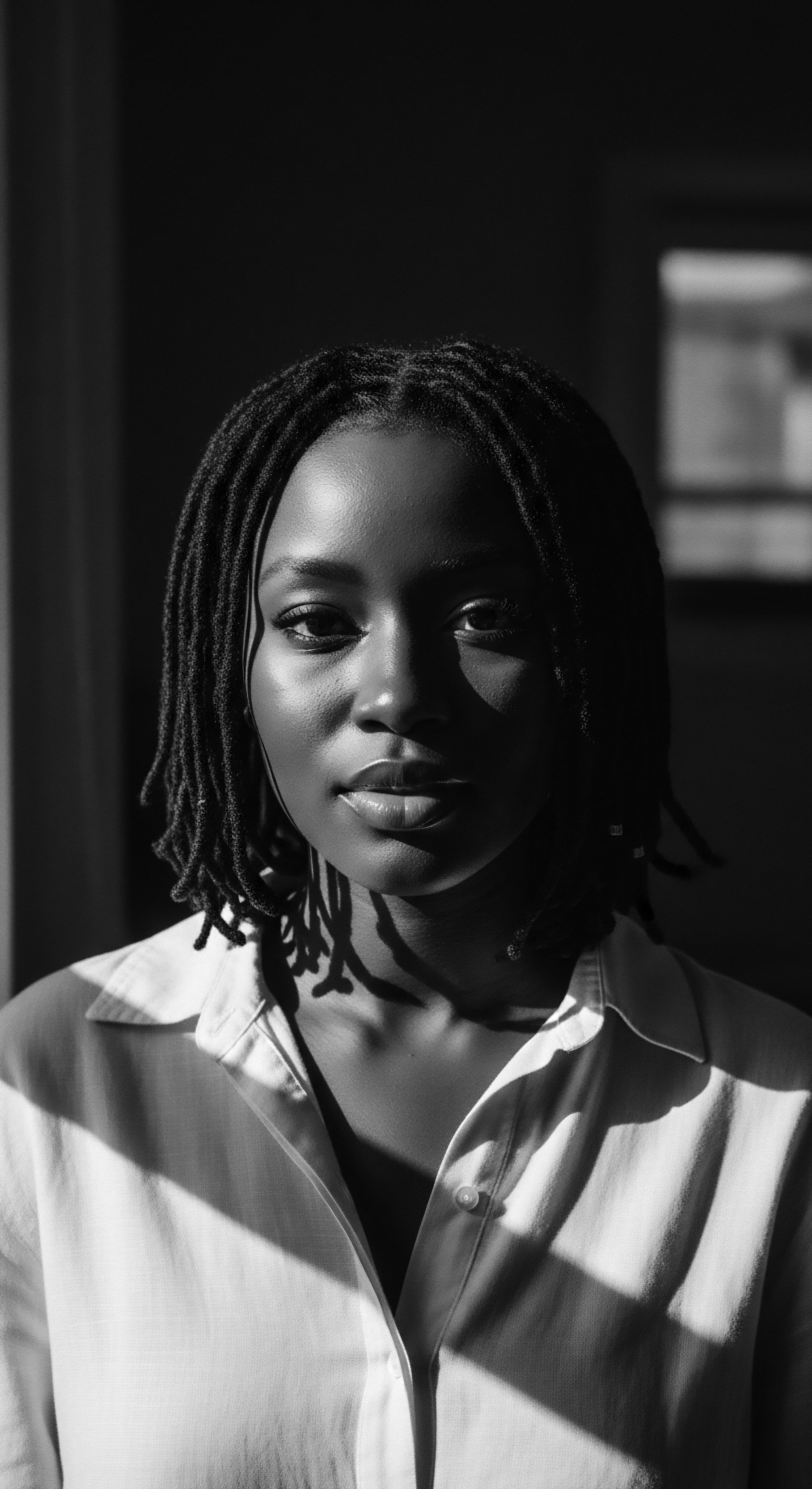
The Earliest Expressions of Hair Shaping
From the dawn of human presence, the act of arranging hair held importance. Our ancestors, keenly attuned to their surroundings, discovered ways to manage hair for protection against the elements, for hygiene, and for conveying status. The simplest forms of styling involved:
- Gathering ❉ Tying hair back to prevent obstruction during daily tasks or hunting.
- Coiling ❉ Twisting sections of hair upon themselves to create compact, protective forms.
- Plaiting ❉ Interlacing strands of hair to form durable, long-lasting structures.
These rudimentary approaches, born of necessity, laid the groundwork for the sophisticated artistry that would later distinguish hair traditions across continents. The very act of manipulating hair became a fundamental human endeavor, reflecting a deep engagement with the body as a canvas for meaning.
Styling Techniques are not merely about outward appearance; they are the intentional actions, honed across generations, that transform hair into a language of heritage, identity, and care.

Understanding Hair’s Natural State
Before any external application, a foundational understanding of hair’s natural properties is essential. Textured hair, in its diverse forms, possesses a unique helical structure that influences how it behaves under various conditions. This intrinsic characteristic dictates the approaches one might take to cleanse, condition, and ultimately, arrange it.
The designation ‘Styling Techniques’ therefore encompasses methods that honor this inherent structure, rather than working against it. It implies a recognition of the hair’s natural inclination and a respectful partnership with its distinct qualities.
The significance of this understanding cannot be overstated. For countless generations, ancestral communities observed and adapted to the specific needs of textured hair, developing techniques that supported its health and celebrated its unique forms. This intimate knowledge, passed down through oral tradition and hands-on teaching, forms the bedrock of our present-day comprehension of hair care and styling. It is a continuous conversation between ancient wisdom and contemporary practice, where the deep meaning of a strand’s story is always honored.

Intermediate
Moving beyond a basic comprehension, the intermediate interpretation of Styling Techniques reveals a layered system of care and expression, particularly pertinent to textured hair. This is where the simple act of arrangement transforms into a purposeful ritual, a practice deeply informed by cultural lineage and communal values. The description of these techniques involves not only the ‘how’ but also the ‘why,’ recognizing their profound implications for identity, protection, and intergenerational connection. It is an elucidation of methods that have been refined over centuries, often in response to specific environmental demands or social declarations.

The Protective Artistry of Ancestors
Many of the Styling Techniques central to textured hair heritage originated as protective measures. In various African climates, elaborate styles shielded the scalp from harsh sun, minimized tangling, and retained moisture. These were not simply aesthetic choices; they were intelligent adaptations that preserved hair health and allowed for extended periods between extensive care routines. The intention behind these methods was deeply practical, yet their execution often became an art form, a visual lexicon of community and individual status.
The Yoruba people, for example, developed a vast array of intricate styles, each carrying specific social or spiritual connotations. Styles such as Irun Kiko, a form of thread-wrapping, conveyed meaning related to femininity, marriage, and rites of passage. These styles were not merely decorative; they were living narratives woven into the very strands of a person’s being. This deep cultural context elevates the concept of Styling Techniques beyond simple grooming, positioning it as a vital aspect of cultural transmission.
Styling Techniques for textured hair are often an ancestral symphony, where practical protection and profound cultural expression intertwine, telling stories of resilience and identity through every twist and plait.

Tools and Preparations ❉ Echoes from the Source
The historical development of Styling Techniques is inseparable from the tools and preparations used. Early communities relied on natural resources to aid in hair manipulation and maintenance. These included:
- Combs and Picks ❉ Crafted from wood, bone, or horn, designed to navigate the unique patterns of coiled and curly hair.
- Natural Oils and Butters ❉ Such as shea butter and palm oil, applied for moisture, sheen, and pliability.
- Clays and Pigments ❉ Used for both protection and symbolic adornment, often reflecting spiritual beliefs or social standing.
The purposeful selection and application of these materials underscore the deep, intuitive understanding ancestral practitioners held regarding hair’s needs. The meaning embedded in these practices was not just about superficial beautification, but about holistic wellness and a connection to the earth’s bounty. The careful designation of specific herbs or minerals for hair care speaks to a sophisticated ethnobotanical knowledge.
The preparation of these natural ingredients often involved communal rituals, further strengthening social bonds. The act of gathering, processing, and applying these elements became a shared experience, reinforcing the collective memory of care and cultural identity. This historical context reveals how Styling Techniques were, and remain, a communal endeavor, fostering connection and the transfer of wisdom.
| Traditional Method/Tool Thread-Wrapping (e.g. Irun Kiko) |
| Ancestral Purpose/Significance Elongation, protection, cultural marker, social status. |
| Contemporary Parallel/Scientific Link Low-tension styling, heatless stretching, promoting length retention. |
| Traditional Method/Tool Natural Butters (e.g. Shea Butter) |
| Ancestral Purpose/Significance Moisture retention, softening, scalp health, symbolic anointing. |
| Contemporary Parallel/Scientific Link Emollient properties, lipid barrier support, conditioning agents. |
| Traditional Method/Tool Cornrows (various patterns) |
| Ancestral Purpose/Significance Scalp protection, communication (e.g. maps), tribal identification, spiritual connection. |
| Contemporary Parallel/Scientific Link Protective styling, tension management, scalp access, cultural expression. |
| Traditional Method/Tool Wooden Combs |
| Ancestral Purpose/Significance Detangling, stimulating scalp circulation, distributing natural oils. |
| Contemporary Parallel/Scientific Link Gentle detangling, minimizing breakage, stimulating blood flow. |
| Traditional Method/Tool This table illustrates the enduring relevance of ancestral Styling Techniques, demonstrating how ancient wisdom continues to inform modern textured hair care. |
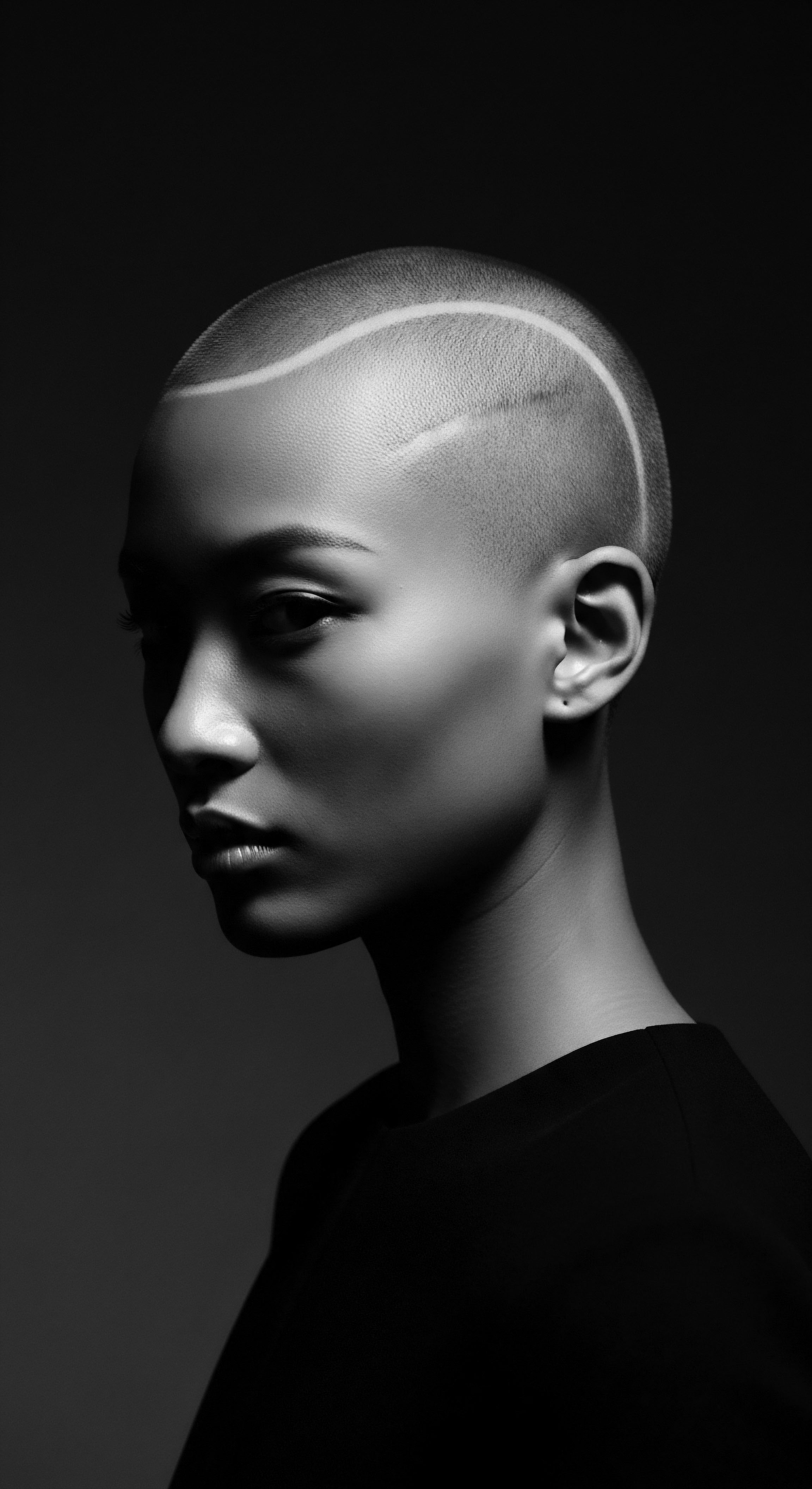
Styling as a Form of Communication
Beyond protection and aesthetics, Styling Techniques historically served as a potent form of non-verbal communication within African societies. A person’s hair could convey their age, marital status, social rank, tribal affiliation, wealth, and even their emotional state. The intricate patterns, the presence or absence of adornments, and the overall style carried specific messages understood by the community. This deep semiotic layer distinguishes Styling Techniques in textured hair heritage, making them far more than simple fashion choices.
The act of styling became a communal activity, often taking hours, during which stories were shared, wisdom imparted, and bonds reinforced. This communal aspect highlights the social dimension of Styling Techniques, underscoring their role in building and maintaining community structures. It is a testament to the enduring power of shared experience and the continuous flow of ancestral knowledge.

Academic
The academic investigation of Styling Techniques reveals a complex interplay of biocultural evolution, socio-historical forces, and the profound assertion of identity, particularly within the context of textured hair. This is not a mere descriptive catalog but a rigorous examination of the methods, their underlying principles, their cultural meanings, and their long-term consequences. From an academic vantage, Styling Techniques represent a dynamic system of human adaptation and expression, deeply rooted in the biological specificities of textured hair and the ancestral wisdom that has shaped its care across generations. The explication of these techniques requires a lens that integrates anthropology, material science, and the lived experiences of Black and mixed-race communities, offering a comprehensive exploration of their significance.
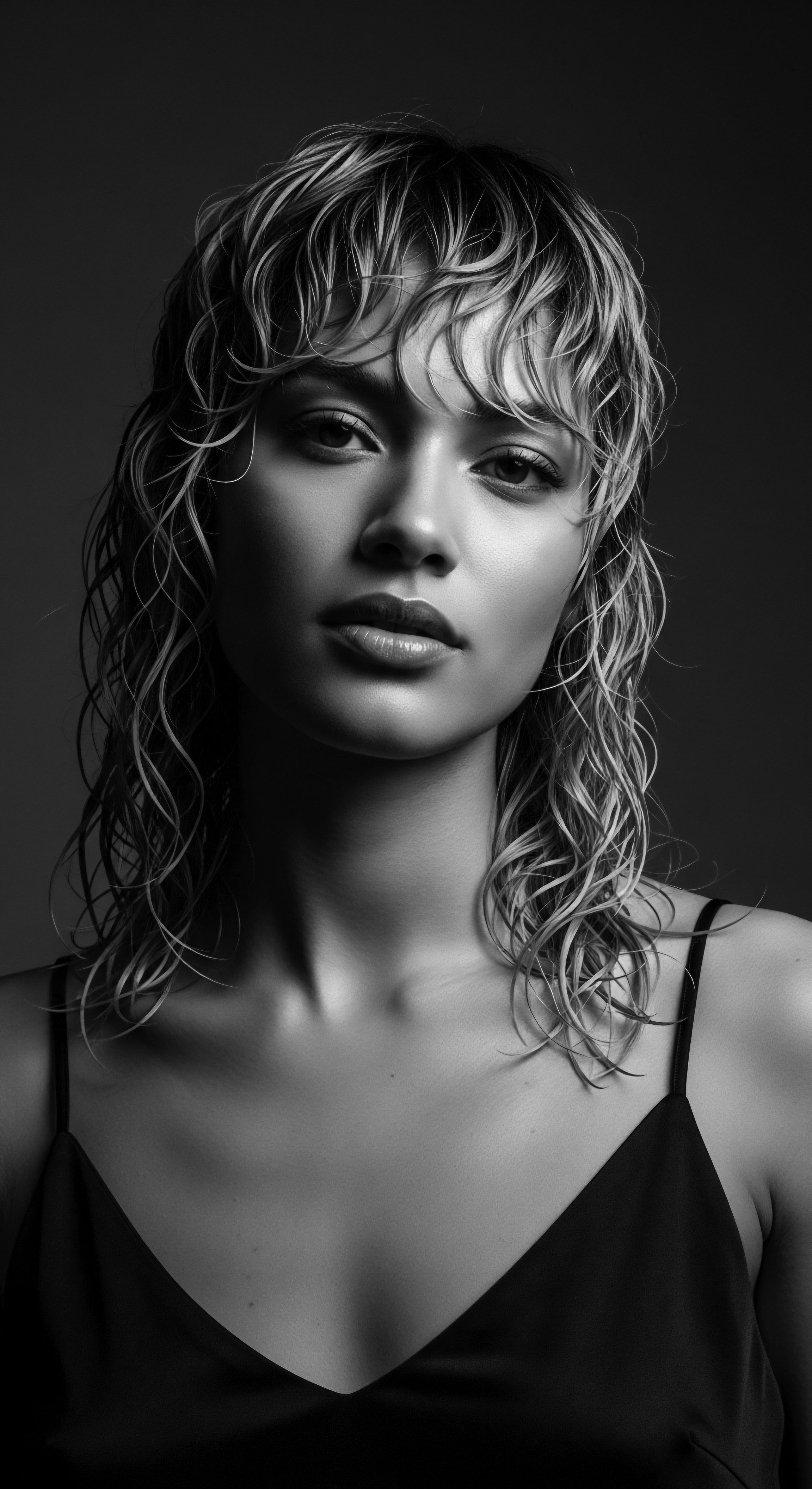
Biocultural Underpinnings of Textured Hair Styling
At the fundamental level, Styling Techniques for textured hair are responses to its unique biological architecture. The elliptical cross-section of hair strands, coupled with the varied distribution of disulfide bonds, gives rise to the distinctive coiling and curling patterns. This inherent biology presents both challenges and opportunities for manipulation. Academic discourse posits that ancestral Styling Techniques were not random acts but rather empirical discoveries of how to best manage and preserve hair with these specific properties.
The methods of twisting, braiding, and coiling, for example, minimize friction between individual strands, thereby reducing breakage and retaining natural moisture, which is often more difficult for hair with a high curl density to maintain. This designation of practical efficacy, honed over millennia, is a testament to sophisticated, pre-scientific understanding.
Consider the science behind practices like “coiling” or “twisting” sections of hair. These actions, intuitively understood by ancestral practitioners, serve to compact the hair, creating a more cohesive structure. This compaction reduces the surface area exposed to environmental stressors and minimizes mechanical damage from daily friction.
Furthermore, the practice of sectioning hair for styling, a common element across many traditional techniques, allows for even distribution of natural oils and applied emollients, addressing the challenge of sebum transfer along highly coiled strands. This methodical approach to hair management reflects a deep, experiential knowledge of its biomechanical properties.

The Interconnectedness of Technique and Cultural Survival
Beyond biological adaptation, Styling Techniques served as critical mechanisms for cultural survival and resistance, particularly during periods of profound upheaval such as the transatlantic slave trade. This is a point of deep academic and historical significance, often less commonly highlighted but rigorously documented. Enslaved Africans, forcibly stripped of their material possessions, languages, and traditional spiritual practices, found ways to preserve elements of their heritage through their bodies, and hair became a potent canvas for this resilience. The meaning of Styling Techniques shifted from overt cultural markers to covert instruments of liberation.
One powerful historical example, often recounted in Black folklore and now increasingly affirmed by historical research, illuminates this connection ❉ the use of Cornrows as Escape Maps during the era of slavery. In regions like Colombia, enslaved people, led by figures such as Benkos Biohó, devised intricate patterns in their cornrows that literally depicted escape routes through plantations and surrounding terrain. These ‘hair maps’ were undetectable to their enslavers, who dismissed African hairstyles as mere adornments or signs of savagery. A specific style, sometimes called “departes,” signaled the intent to escape, with thicker, tighter braids tied into buns representing paths to freedom.
Other curved braids mimicked roads, and even symbols for obstacles like rivers (a worm-shaped braid) or mountains (a Bantu knot) were integrated. This ingenious system allowed for silent, clandestine communication, a testament to the profound intellect and resilience of those enduring unimaginable hardship. Moreover, some accounts indicate that seeds for survival were hidden within these braids, to be planted once freedom was attained.
This historical instance underscores how Styling Techniques were not simply methods of arrangement but became a sophisticated form of covert communication and a vehicle for survival. It demonstrates the profound human capacity for ingenuity in the face of oppression, transforming an everyday practice into an act of radical resistance. The social implications of this practice are immense, showcasing hair as a dynamic site of agency and cultural continuity.

Styling Techniques as Sociolinguistic Phenomena
From a sociolinguistic perspective, Styling Techniques function as a visual language, a system of signs and symbols that convey information about an individual’s identity and their relationship to their community. This interpretation clarifies how hair acts as a non-verbal communicator, often speaking volumes before a single word is uttered. In many traditional African societies, specific coiffures designated age, marital status, social standing, tribal affiliation, and even religious beliefs. This form of designation was deeply ingrained, understood by all members of a community.
The act of styling itself was often a communal ritual, a time for intergenerational bonding and the transmission of cultural knowledge. The elder styling the hair of a younger person was not merely performing a task; they were imparting history, sharing wisdom, and reinforcing social norms. This collective experience of hair care, the ‘tender thread’ of connection, solidifies the understanding of Styling Techniques as a deeply social and cultural phenomenon. The intention behind these shared moments was to solidify identity and pass down traditions, making the practice far more than a simple act of grooming.
In the diaspora, particularly in the Americas, this sociolinguistic aspect evolved. While overt tribal markers became less common due to forced displacement, hair continued to serve as a marker of identity and resistance. The Afro, for instance, became a powerful symbol during the Civil Rights Movement, representing Black pride, unity, and a rejection of Eurocentric beauty standards. This shift from subtle communication to overt political statement demonstrates the adaptability and enduring significance of Styling Techniques as a form of social commentary and identity assertion.
The historical use of cornrows as escape maps during slavery is a powerful, albeit harrowing, testament to how Styling Techniques transcended aesthetics, becoming a covert language of survival and an undeniable assertion of agency.

Psychological and Identity Dimensions
The psychological dimension of Styling Techniques for textured hair is equally compelling. Hair, as an extension of the self, holds immense psychological weight. For Black and mixed-race individuals, the journey with their hair often intersects with broader societal perceptions of beauty, professionalism, and belonging. Styling Techniques, therefore, become tools for self-affirmation, self-care, and the reclamation of narratives.
The decision to wear one’s hair in its natural texture, styled in traditional or contemporary protective forms, can be an act of profound self-acceptance and cultural pride. This is a crucial element in understanding the full scope of these practices.
The concept of “hair anxiety” and the disproportionate scrutiny faced by Black women regarding their hair in professional settings highlight the ongoing social pressures. In response, Styling Techniques serve as a means to navigate these pressures while maintaining a connection to heritage. Whether it is the careful construction of braids for longevity and protection, or the artful arrangement of coils, each choice carries an implicit statement about identity and resilience.
The long-term consequences of these choices extend beyond personal appearance, influencing self-esteem, mental well-being, and even career trajectories. Understanding this complex interplay is central to a holistic appreciation of Styling Techniques.

The Material Science of Styling
From a material science perspective, Styling Techniques involve manipulating the chemical and physical properties of hair. The application of heat, moisture, and various agents (gels, creams, oils) alters the hydrogen bonds and, in some cases, the disulfide bonds within the hair shaft, allowing it to be reshaped. For textured hair, which can be prone to dryness and breakage due to its structural characteristics, the selection of techniques that minimize stress and maximize moisture retention is paramount. This designation of careful material interaction guides the development of products and methods that support hair health.
For example, the practice of “stretching” textured hair using techniques like banding or threading, without direct heat, aims to temporarily alter the curl pattern by gently elongating the coils. This process minimizes damage to the cuticle layer and preserves the hair’s internal moisture balance, unlike high-heat straightening methods that can permanently alter the hair’s protein structure. The deep meaning of these techniques is rooted in preserving the hair’s integrity while achieving desired forms. This continuous pursuit of healthy hair, often echoing ancestral methods, underscores the enduring value of informed Styling Techniques.

Ancestral Wisdom in Hair Chemistry
Ancestral communities, without formal laboratories, possessed an intuitive understanding of hair chemistry. They observed how certain plant extracts, oils, and clays interacted with hair, developing a rich pharmacopeia of hair preparations. The use of mucilaginous plants for slip and detangling, or protein-rich ingredients for strengthening, are examples of this empirical science. This practical knowledge, passed down through generations, laid the groundwork for modern cosmetic science, demonstrating that the pursuit of effective hair care is a timeless human endeavor.
The application of Styling Techniques is therefore a sophisticated dance between biological reality, cultural heritage, and the continuous quest for both aesthetic expression and hair vitality. It is a field ripe for further interdisciplinary study, offering insights into human creativity, resilience, and the enduring power of ancestral wisdom.
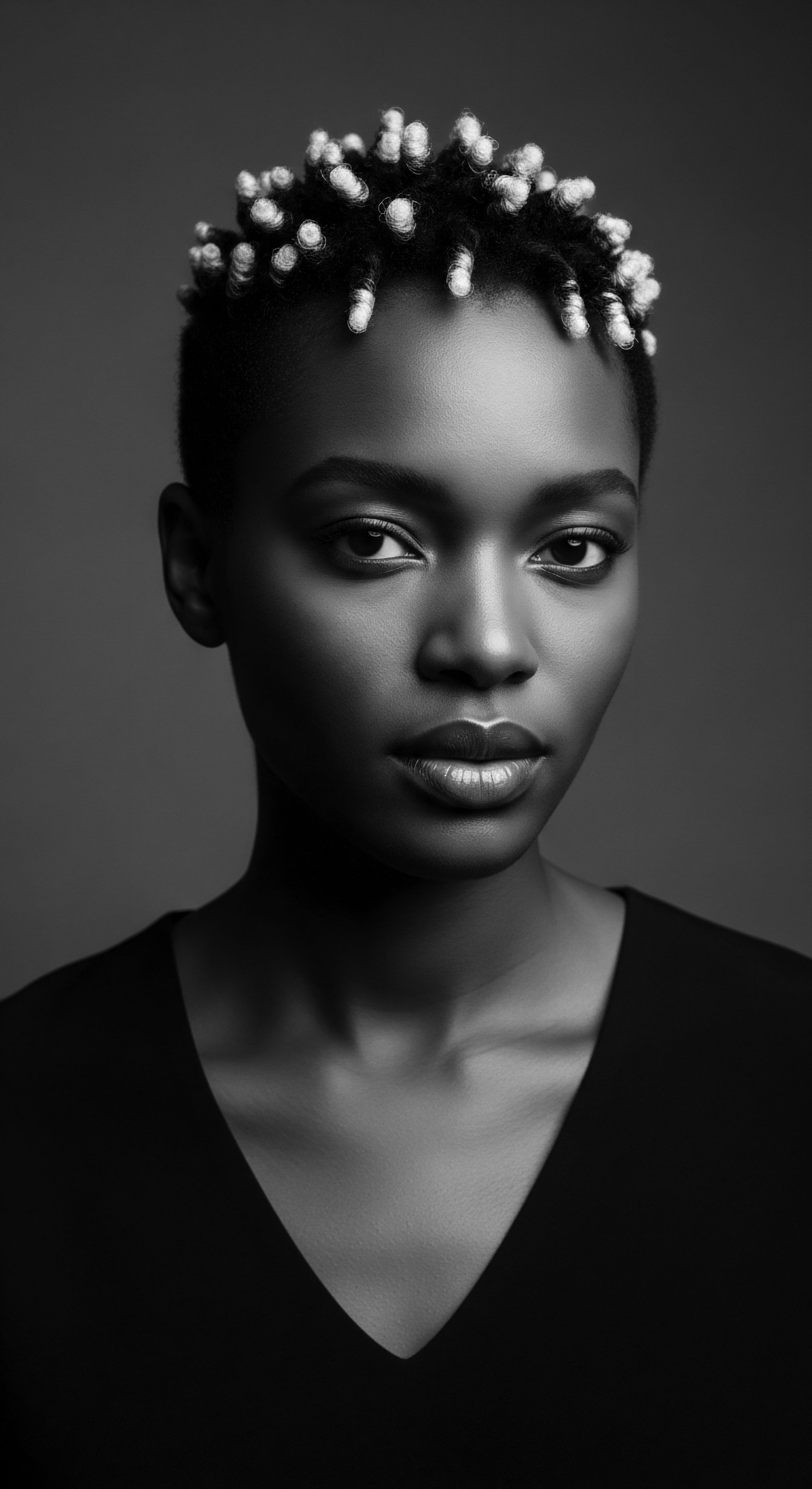
Reflection on the Heritage of Styling Techniques
As we conclude this journey through the varied landscape of Styling Techniques, the profound echoes from the source reverberate with unwavering clarity. These are not merely fleeting trends or superficial acts; they are living testaments to the enduring spirit of textured hair and the communities that cherish it. From the elemental biology of the strand to the intricate narratives woven into its very form, Styling Techniques stand as a powerful symbol of heritage, resilience, and the continuous quest for self-expression. The tender thread of ancestral wisdom, passed down through the hands of mothers, grandmothers, and community elders, continues to guide our understanding, reminding us that every twist, every plait, every coil carries a story, a legacy.
The history of Styling Techniques, particularly within Black and mixed-race hair experiences, is a testament to creativity born from necessity, to beauty forged in defiance, and to identity asserted with every strand. It is a narrative of survival, of cultural preservation in the face of erasure, and of profound adaptation. The seemingly simple act of arranging hair becomes a dialogue with the past, a celebration of the present, and a hopeful declaration for the future. The unbound helix of textured hair, in all its glorious forms, continues to speak volumes, articulating tales of ancestral strength and unwavering spirit.
In Roothea’s ‘living library,’ the definition of Styling Techniques remains dynamic, ever-evolving, yet always anchored in its deep heritage. It calls upon us to recognize the wisdom embedded in traditional practices, to honor the hands that shaped history through hair, and to carry forward the torch of self-care and cultural pride. This continuous learning, this mindful engagement with our hair’s ancestral story, ensures that the soul of a strand will forever speak its truth, loud and clear, across generations.

References
- Afriklens. (2024). African Hairstyles ❉ Cultural Significance and Legacy.
- Dope Black. (2023). The History Of Black People Braiding Their Hair.
- Human Material Loop. (2025). The Hidden Meaning Behind Cornrows.
- IROKO Theatre Company. (2024). Hair As Heritage.
- Kodd Magazine. (2024). African hair tells a story and inspires the future.
- Odele Beauty. (2024). A History Lesson On Hair Braiding.
- OkayAfrica. (2023). A Regional Walk Through The History of African Hair Braiding.
- OkayAfrica. (2024). Reclaiming Tradition ❉ How Hair Beads Connect Us to Our History.
- Oforiwa, A. (2023). The History and Culture of African Natural Hair ❉ From Ancient Times to Modern Trends. AMAKA Studio.
- Princeton University Art Museum. (n.d.). Hair and the Head.
- S2. (n.d.). Pathways to Ancestors Through Hair.
- The Charles Street Times. (2022). Cornrows.
- The Gale Review. (2021). African Hairstyles – The “Dreaded” Colonial Legacy.
- Vertex AI Search. (2023). Hair Mapping.
- Walker, K. (2014). The Art of Hair as Adornment.
